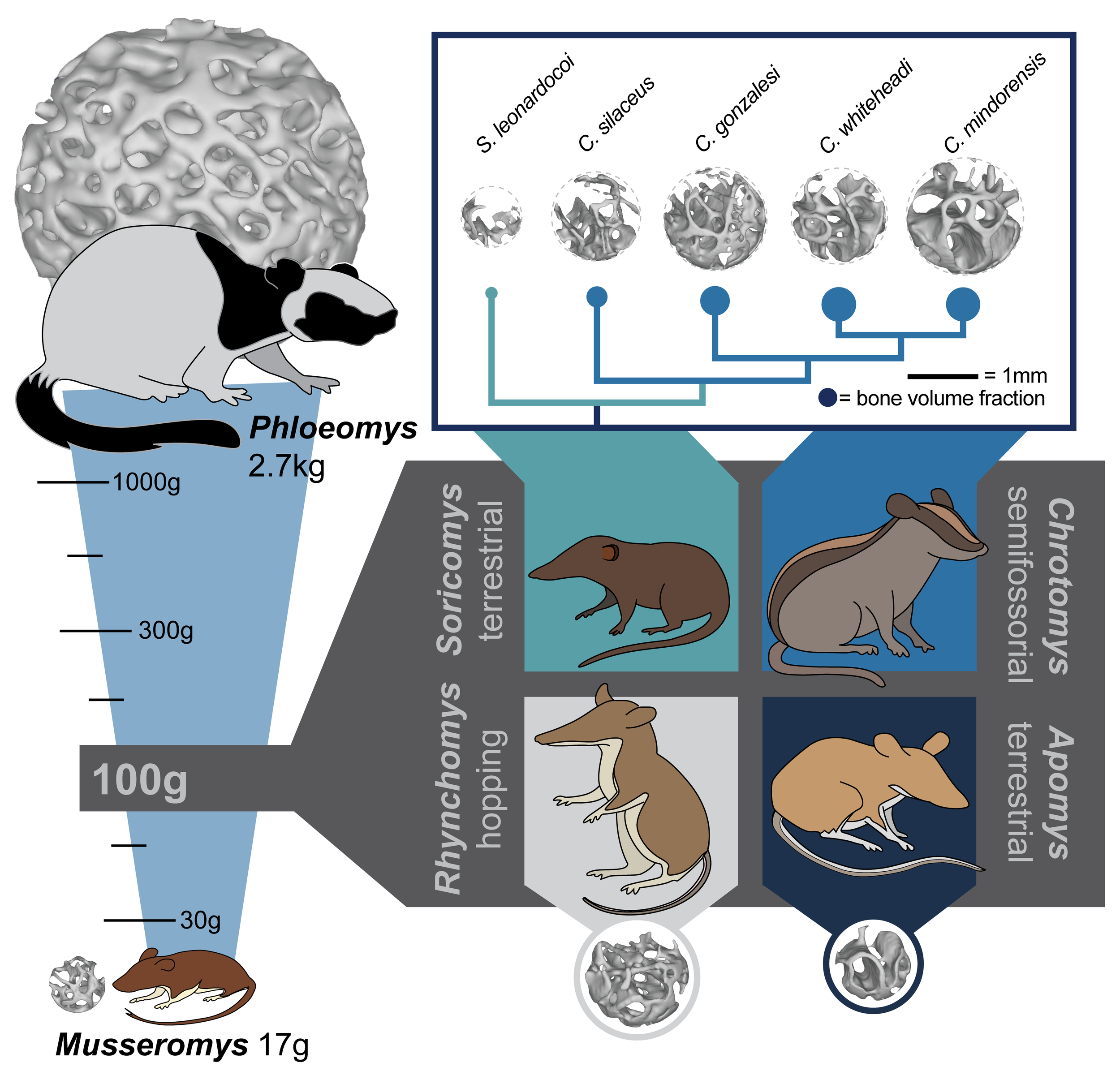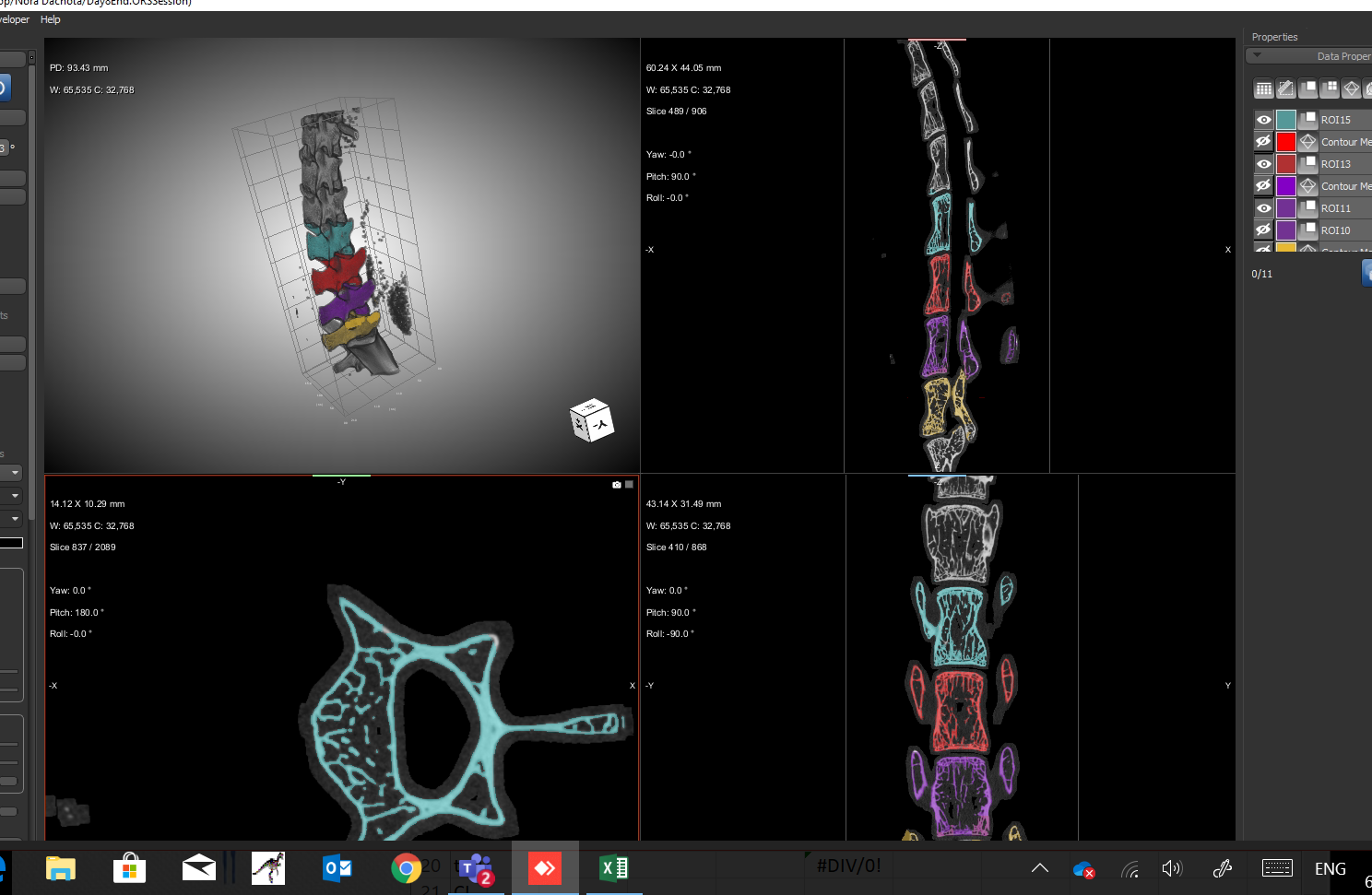How do body size and substrate use affect bone morphology?
The mammalian skeleton is shaped by many factors, including genetics, behavior, and the environment. The spongy bone tissue called trabecular bone that is found inside many skeletal elements has been shown to reflect the mechanical properties of a bone, and can relate to the way an animal uses its body (e.g., climbing trees versus hopping versus burrowing in the ground). I am currently investigating the relationship between trabecular bone structure and animal movement, body size, and evolutionary history in two highly distinctive groups of Philippine rodents called “earthworm mice” (which feed heavily on earthworms) and “cloud rats” (which live in forest canopy and eat seeds, buds, and leaves). This work is a collaboration with Larry Heaney (Field Museum) and Ken Angielczyk (Field Museum). Larry and his collaborators have studied and collected these ecologically and morphologically diverse animals for several decades, resulting in a wealth of information on their ecology, behavior, natural history, and evolutionary history making them an ideal group for linking skeletal shape with these topics.
investigation of how body size and ecology influence bone morphology among Philippine murid rodents. Grey spheres are 3D models of trabecular bone volumes of interest from the third lumbar vertebra (L3). Note similarities in trabecular morphology among Chrotomys species and Rhynchomys, for example, and differences between Musseromys (arboreal) and Soricomys (semifossorial).
I have executed microCT scans on over 100 dry and fluid-preserved skeletal specimens from both groups of rodents, including animals from all known genera of the two groups, and used these scans to produce detailed 3D models of their vertebrae. My current work focuses on the lumbar spine, because this part of the spine is both morphologically plastic and heavily involved in movement. The first part of this study has focused on the earthworm mice, which move around their environment in highly varied ways (running, hopping, digging). Our results show that body size plays a huge role in shaping the structure of trabecular bone, but both body mass and trabecular structure are correlated with the evolutionary relationships in the group. Nonetheless, the variation I have documented also suggests that vertebral trabecular bone morphology may relate to style of movement, especially when examined in a broad evolutionary context.
A second recent study focuses on the vertebral trabecular bone of cloud rats, which all live in the forest canopy but have a range of body sizes from ~20 grams to over 2400 grams. This study allowed us to better characterize how trabecular bone morphology changes with body size, in a group that varies little in their type of locomotion. Another developing piece of this work concerns the effect that variation in habitat has on bone morphology. The home environment of these rodents in the Philippines is one of dramatic topography, with cool, very wet mountains and warmer, drier lowlands forming a complex landscape. With CT scans of specimens from two selected species of earthworm mice, we can investigate how much variation exists within each species by documenting changes in their bone anatomy along mountainsides with dramatic habitat differences, a topic that has not ever previously been studied. Together, these studies constitute one of the first attempts to systematically characterize the many influences on trabecular bone outside humans and model organisms. They are the first of their kind to focus on small mammals in particular, and thus represent an important contribution to the study of bone functional morphology. Further, this work highlights the continuing importance of natural history collections for understanding the origins and maintenance of organismal diversity on Earth.
PUBLICATIONS
Smith, S.M., Angielczyk, K.D., Heaney, L. R. 2024. Small skeletons show size-specific scaling: an exploration of allometry in the mammalian lumbar spine. Proceedings of the Royal Society B: Biological Sciences 291: 20232868. doi: 10.1098/rspb.2023.2868
Smith, S.M., Rowsey, D.M., Nations, J.A., Angielczyk, K.D., and Heaney, L.R. 2023. The roles of phylogeny, body size, and substrate use in trabecular bone variation among Philippine "earthworm mice" (Rodentia: Chrotomyini). Biological Journal of the Linnean Society: blad033. doi: 10.1093/biolinnean/blad033









